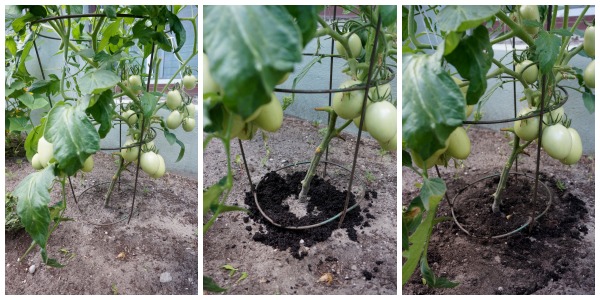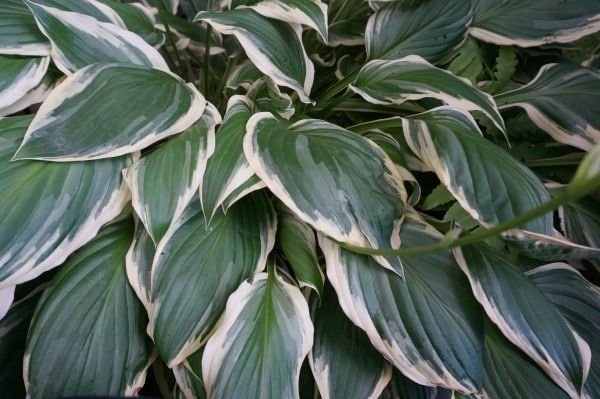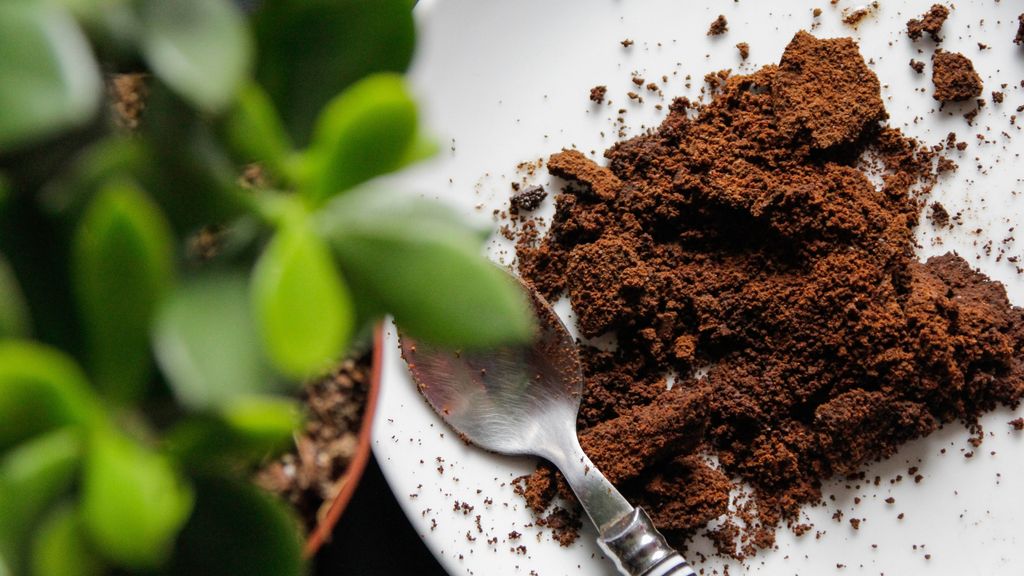Lets get back to tips for building an awesome home garden. The girls and I were in line at Starbucks the other day when we saw a bin full of silver bags and a sign that said “Used Coffee Grounds Bags.” for free. Always in search of a “good deal” we grabbed a bag and brought it back to our garden. Ever wonder how to use coffee grounds in the garden? We know everything you need to know!
There are Amazon Affiliate links in this article. This doesn’t cost you anything extra, but it means we might get paid for suggesting these products. You can read our full disclosure policy on our Disclosure Page for more details.
As both a gardener and avid coffee drinker, you may be wondering if you can combine your two passions Can used coffee grounds give a boost to potted basil plants? basil’s popularity in kitchen herb gardens makes it a prime candidate for coffee ground fertilizing experiments This article covers the potential pros and cons of using spent coffee to fertilize your basil and provides tips on the best application methods.
An Overview of Coffee Ground Fertilizer
Coffee grounds are often touted as an eco-friendly fertilizer. The grounds contain the following key nutrients:
-
Nitrogen – Around 2% nitrogen which is readily available to plant roots. Nitrogen promotes leafy green growth.
-
Potassium – Potassium helps plants resist disease and supports water utilization, flower development, and root health.
-
Phosphorus – Critical for photosynthesis, blooming, fruiting and root growth.
-
Iron, magnesium, manganese – Micronutrients aid chlorophyll production and enzyme functions.
However, there are some downsides to be aware of:
-
Acidity – Coffee grounds make soil more acidic as they break down. Not all plants like acidic soil.
-
Salts – Excess sodium and other salts from grounds can accumulate and damage roots.
-
Rapid nitrogen release – Nitrogen may leach quickly from dry grounds before plants can absorb it.
Overall, used coffee can provide a nutrient boost to many plants. But the acidity and salt levels require cautious application, especially for containers.
Are Coffee Grounds Good for Potted Basil?
Many cooks grow basil indoors in pots for easy harvest while preparing meals. How does basil fare when fertilized with spent coffee grounds? Here are the key considerations:
-
Acidity – Basil prefers a more neutral soil pH around 6.5-7. Coffee grounds make soil more acidic as they decompose.
-
Nutrient needs – Basil thrives on nitrogen. The 2% nitrogen in grounds can fuel leafy growth.
-
Salt sensitivity – Too many dry grounds can accumulate salts and burn basil roots.
-
Soil nutrition – Indoor potting mix lacks nutrients so fertilizing is beneficial.
Overall, coffee grounds can be a helpful supplement for container basil when applied judiciously. Follow these tips to minimize risks and maximize benefits:
-
Use grounds sparingly – no more than a thin coating around plants every few weeks.
-
Mix grounds into the top few inches of soil to dilute acidity and salts.
-
Alternate coffee grounds with more neutral organic fertilizers like compost tea.
-
Avoid letting dry grounds accumulate heavily at the soil surface.
Best Practices for Using Coffee Grounds on Basil
Follow these methods to safely give your indoor basil a gentle boost from used coffee:
Direct Soil Application
-
Spread a thin 1/4 inch layer of spent grounds around the base of plants.
-
Use a fork or trowel to lightly mix grounds into the top 2-3 inches of potting soil.
-
Water thoroughly after applying to further distribute nutrients and acids.
-
Repeat monthly or every 6-8 weeks to provide a slow nitrogen release.
Diluted Coffee Fertilizer
-
Brew a concentrated “tea” by soaking grounds in water for a day. Use a ratio of 1 cup grounds to 1 gallon of water.
-
Dilute concentrate 2:1 with plain water to avoid burning plants with excess acids.
-
Pour diluted liquid fertilizer over soil until it drains from the pot’s bottom.
-
Fertilize basil every 2-3 weeks with the diluted grounds tea.
Coffee Ground Mulch
-
Spread grounds thinly on soil surface around plants as a light mulch layer.
-
Avoid letting grounds completely coat the soil which can lead to excessive salt and acid accumulation.
-
Reapply fresh mulch every 1-2 months after gently turning existing layer into soil.
The key is using coffee grounds in moderation. Test a small area first and watch for any leaf yellowing or browning which can indicate overuse. Adjust application frequency and volume as needed to suit your individual growing conditions and basil’s response.
What Other Herbs Thrive With Coffee Ground Fertilizer?
Many cooks grow pots of herbs like parsley, oregano, thyme, sage, mint, and rosemary. In addition to basil, these species can benefit from periodic coffee ground feeding:
-
Parsley – Loves nitrogen. Handles more acidity than basil.
-
Oregano and thyme – Appreciate mild soil acidity and nutrient boost.
-
Sage – Tolerates average to acidic soil. Needs good drainage.
-
Mint – Grows aggressively so nitrogen fuels leafy growth. Requires ample moisture.
-
Rosemary – Does well in average to acidic conditions. Allow soil to dry between watering.
Coffee grounds won’t likely harm most culinary herbs, but can quickly overwhelm more delicate plants. Start with light applications and observe plant health closely.
Benefits of Coffee Grounds for Outdoor Garden Beds
Used coffee can also nourish outdoor vegetables, flowers, bushes and trees. Ways to use spent grounds in garden beds include:
-
Composting – Allows slow decomposition to mellow acidity and release nitrogen.
-
Digging into soil – Mixing grounds 6-12 inches deep dilutes impacts.
-
Mulching – Spread around plants to suppress weeds and retain moisture.
-
Fertilizing acid-lovers – Azaleas, hydrangeas, blueberries, evergreens benefit from acidity.
The larger soil volume outdoors helps buffer coffee’s acids and salts. Plus rainfall helps leach any buildup. Feel free to apply more generous amounts of grounds around established outdoor plants.
Troubleshooting Overuse of Coffee Grounds
Watch for these signs of excessive coffee grounds application:
-
Browning or yellowing leaves – Indicates too much acid or salt accumulation.
-
Stunted growth – Excess nitrogen can limit growth.
-
Poor flowering/fruiting – Too much nitrogen encourages leaves over flowers/fruit.
-
Attraction of mold – Wet grounds can get moldy which spreads spores to plants.
Flushing pots with clean water to remove excess salts and acids can help recover over-fertilized plants. Resume fertilizing cautiously at lower doses.
In moderation, used coffee grounds can be a safe, effective fertilizer for basil and other herbs. But their acidity and salt content requires care when applying to containers. Monitor plant health closely and adjust amounts as needed. With the right careful approach, spent coffee can boost indoor and outdoor plants while cutting waste.
Why use coffee grounds in the garden? Are coffee grounds good for plants?

Nitrogen Rich Fertilizer: Plants use nitrogen to produce a protein they need to grow. Plants absorb nitrogen in the soil, through their roots. Most store-bought garden fertilizers are nitrogen-rich. It turns out that used coffee grounds have a helpful level of nitrogen as well, approximately 2%. So, how can we use this? Putting used coffee grounds in a compost pile is a good idea. If you don’t have a compost pile in your yard, here are some easy ways to use coffee grounds in your garden.

Coffee Grounds as a Natural Pest Repellant: First up, coffee grounds are a natural pest repellant. Who knew? Putting coffee grounds around the garden edge will keep slugs, ants, and snails out. Apparently, slugs, snails and ants are not fond of coffee. We piled a ring of coffee grounds around our slug-susceptible hostas. As an added bonus, cats dont like coffee either. keeps the garden free from becoming a kitty litter for feral cats.
How to Use Coffee Grounds in the Garden
I grew up with a mom who loved to garden and who loved coffee. Every once in a while I would see my mom pouring coffee grounds into the garden. I really should have asked her about that. but I didnt. I decided to learn more about this coffee ground thing now that I’m a “gardener in the making.” It turns out that used coffee grounds are actually very helpful in the garden.
Growing basil in coffee grounds
- The Ultimate Guide to Growing Strawberries in Raised Beds - August 8, 2025
- No-Dig Garden Beds: The Easiest Way to Grow a Beautiful Garden - August 6, 2025
- How to Protect and Preserve Wood for Raised Garden Beds - August 6, 2025

